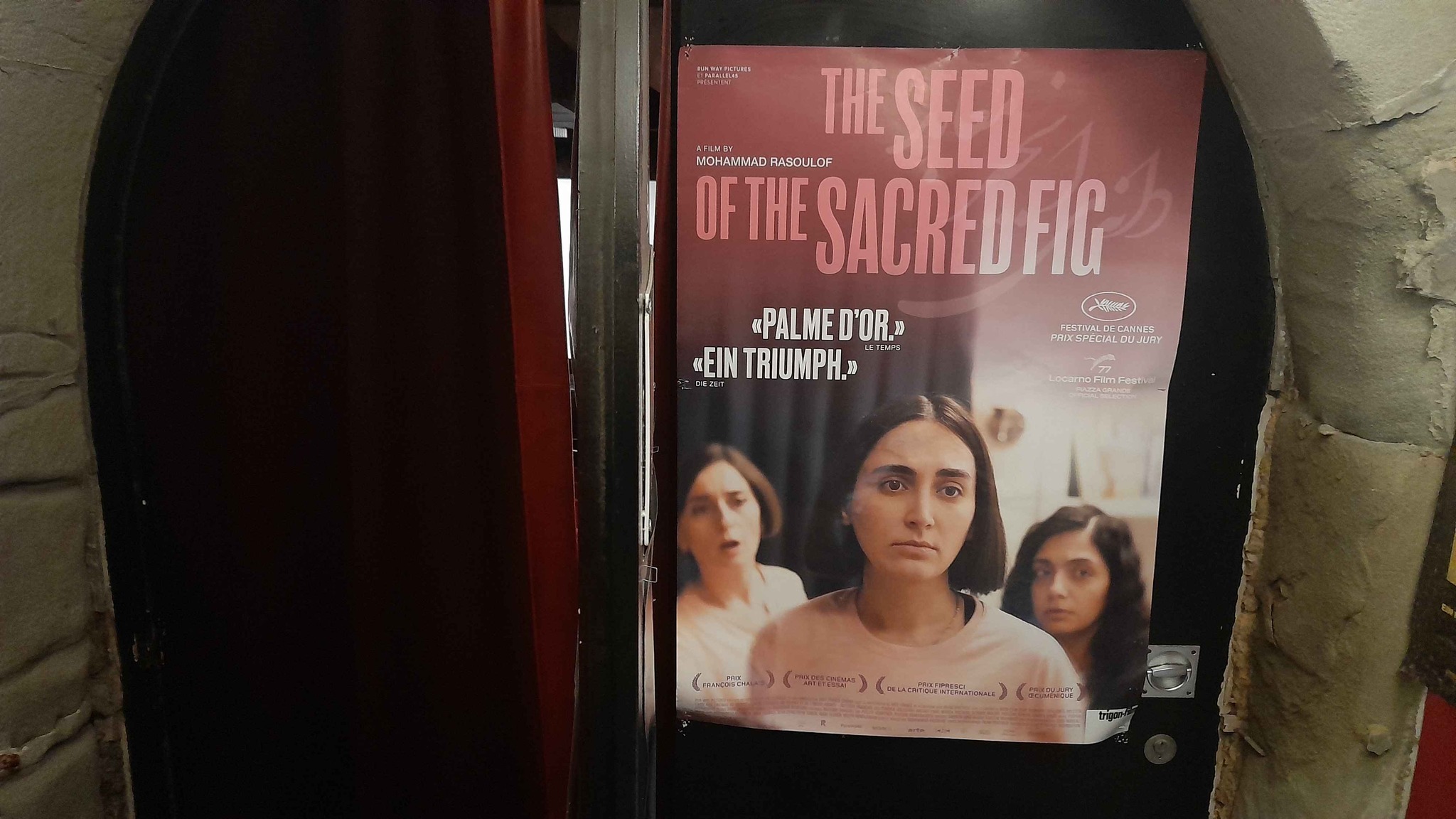For decades, Iranian cinema has been known worldwide for its poetic metaphors, subtle social critique, and the singular ability of its filmmakers to tell deep human stories within severe constraints. Beneath that familiar surface, however, lies a turbulent, complex, and highly dynamic artistic ecosystem now undergoing a profound transformation. A far-reaching conversation between Shahram Mokri and Majid Barzegar—two of the most prominent filmmakers and thinkers of Iran’s independent cinema—pulls back the curtain on this multi-layered reality and lets an international audience see the context in which today’s Iranian filmmaker breathes, creates, and struggles. More than simple analysis, their exchange reads like a survival manifesto for a time when “reality” itself has turned into a battlefield. Drawing on that rich discussion, this article examines the key shifts and paradoxes shaping contemporary Iranian cinema.
Your support helps keep this space alive but also ensures that these critical discussions remain accessible to all.
The Collapse of the “Representational Contract” and the Birth of the Filmmaker-Censor
To grasp the current state of Iran’s independent cinema, we have to return to a historic turning point: autumn 2022 and the “Woman, Life, Freedom” movement. As Shahram Mokri argues, the most important change of that period was a fundamental redefinition of the relationship between film and “reality.” Before then, there was an unwritten “representational contract” among the filmmaker, the audience, and even the ruling system. Everyone accepted that the on-screen image of life—for instance, a woman wearing a headscarf at home or even in the shower—was not necessarily a mirror of reality but a convention for getting past censorship. This contradiction had always existed, and filmmakers like Abbas Kiarostami cleverly sidestepped it (for example by filming outdoors or in cars). Yet the broader film community and society treated it as part of the rules of the game.
The 2022 uprising broke that contract. When “reality” changed on the streets and in everyday life—and citizens refused to play imposed roles—reproducing that old “representational reality” in cinema no longer meant anything for an independent filmmaker except hypocrisy and self-censorship. As Mokri notes, a filmmaker who claims a direct link to society and reality can no longer hide behind those conventions. Continuing the old approach would turn the filmmaker into the “first censor” of their own project: the person who asks actors to adjust their clothing so it differs from the street, or who turns the camera away to avoid recording what actually exists.
This challenge pushed independent cinema to a point of no return and effectively erased the line between “independent” and “underground” film. Previously, “underground” mostly meant projects made without permits because they touched explicitly forbidden political themes. Now a purely “formal” decision—such as depicting optional hijab—can be enough to turn an independent work into an underground one. Filmmakers who had operated within the permitted independent sphere suddenly faced a stark choice: stop working, shift to permit-free production, or keep the old representational contract and drift away from the identity of their own cinema.
Redefining “Success” and the Historical Audience
A key question for international readers is: how are these films actually made, and how do they keep going? The competition between independent cinema and Iran’s commercial or state-backed cinema has always been unequal. Independent films are made with small budgets and small crews, and they usually get very limited theatrical runs. With a historical perspective, Majid Barzegar treats this worry as a permanent condition of Iranian cinema rather than a new phenomenon. He points to Brick and Mirror (Ebrahim Golestan, 1964), which screened for only one week at the director’s personal expense, yet sixty years later was shown as a masterpiece in Venice. This example clarifies the core economic philosophy of independent cinema: its audience is not defined in a short window but across time.
The two filmmakers also smartly challenge the very idea of “majority cinema.” Barzegar notes that the biggest-selling comedies—supposedly the pulse of society—are watched by only two to three million people in a country of roughly ninety million. From this angle, the gap between two million viewers of a commercial hit and, say, five hundred thousand viewers of an independent film like Fish & Cat (by Shahram Mokri) is “almost laughable.” In truth, both strands are minorities compared to the silent majority. Mokri extends the point with a theoretical frame: “We, as minority cinema, make no claims and accept that we are a minority. But the real question is whether Iran’s so-called majority cinema is actually the majority.” He argues that if Iran’s cinematic borders were lifted, minority cinema would keep making its small, festival-bound works, while the domestic “majority cinema” would lose ground to global competitors.
This perspective shows why the strength and impact of independent cinema should not be judged by short-term financial metrics. Like underground music passed hand to hand for years, these films shape tastes and even influence the official mainstream over the long run. They are made on very small budgets, and their return on investment through modest international sales and festivals is often more plausible than the ROI on large, expensive projects.
Even so, new economic pressures are real. Soaring inflation in recent years has driven production costs sharply upward: the dollar that, during the making of Cause of Death: Unknown, was 26,000 tomans now exceeds 100,000 tomans. On top of that, the state and major platforms seem to have intentionally raised pay scales on state-affiliated projects, making filmmaking more expensive overall and pushing independent directors—who cannot compete in that labor market—into an even tougher position.
Art in a Time of Crisis
The social shifts after 2022 placed a new, heavy expectation on filmmakers: the expectation of “radical activism.” This pressure pushed some works toward manifesto-like statements and instant reactions, and critics accused them of being “sloganeering” and forgetting the language of cinema. Majid Barzegar’s reply to this critique is striking and clarifying. He recalls a story about Bahram Beyzaie, the legendary Iranian playwright and director. After a play about the chain murders of intellectuals, someone asked Beyzaie: “Wasn’t your play too slogan-like?” Beyzaie answered: “Can you tell me what exactly is wrong with a slogan?”
Barzegar develops the point: when writers and artists are beheaded in the street, or when a citizen is violently suppressed, isn’t a response with equal intensity—even if it appears “sloganeering”—the right answer? In such moments, the direct and unfiltered recording of history becomes part of the artist’s duty. These films may not last and may be more “consumable,” but they clear the way for deeper works to come. Shahram Mokri analyzes the phenomenon by dividing cinema into “schools” and “genres.” He argues that Iranian cinema—especially after the revolution—has been more indebted to “cinematic schools,” which are inherently tied to social transformations. Just as Italian neorealism was a product of the postwar moment, today’s activist films arise directly from the current social conditions in Iran and should be judged on that basis.
Even so, both filmmakers believe this reactive, “angry” phase is passing, and directors are moving toward a deeper understanding of freedom. The issue is no longer only making an “unveiled” film, but engaging the idea of “choice” and portraying an ordinary, normal life. My Favorite Cake (Maryam Moghadam & Behtash Sanaeeha) is cited as a brilliant example: on the surface it is not political and tells a human love story, yet precisely because it shows an “ordinary” situation within the “extraordinary” constraints of Iranian cinema, it becomes a political and underground work.

made two years ago—one of the earliest underground films produced without enforcing the mandatory hijab on its female cast.
The Paradox of Bans, Accusations, and an Oscar Submission
Perhaps nothing captures the contradictory, shapeless, postmodern nature of Iran’s cultural system better than the journey of Cause of Death: Unknown, produced by Majid Barzegar. He calls the experience “in a word, Wonderland.” The film was banned for three years and labeled “anti-national” and “vulgar” by the previous administration’s cultural managers. Barzegar faced Revolutionary Court proceedings, a prison sentence, and a work ban for this and other films. Then, with a change of government and cultural officials, the very same film was suddenly unbanned and selected as Iran’s official submission to the Oscars.
What does this stunning contradiction reveal? According to Mokri, we live in a “shapeless situation” where any concept can flip into its opposite. Terms like “censorship,” “independent,” or “state-backed” lose stable meaning in this fluid state. This instability—driven by the appointment of “unqualified” managers with poor taste and decisions that are highly personal and political—creates a space where, as Mokri puts it, “when you open your fist, you find there’s nothing in it.” While exhausting for filmmakers, it also shows a system too unstable to endure, one that will ultimately have no choice but to yield to realities imposed by society and culture. The result is an identity limbo for the filmmaker: on one side accused of making an anti-national film, and on the other suddenly branded “state-affiliated” when that same film is sent to the Oscars.
Demystifying the Global Stage
For years, a dominant narrative in Iran’s official media has portrayed global festivals like Cannes and Berlin as political “think tanks” that deliberately act against Iran and only reward films that show a dark image of the country. Mokri and Barzegar firmly reject this view, calling it a misunderstanding of how these events work—and a kind of self-importance. Barzegar stresses, “Honestly, Iranian cinema just isn’t that important there.”
Mokri offers a more precise, crucial analysis: the main function of festivals is to give “minority cinema” room to breathe. This “minority” does not only mean political dissidents; it also includes national and gender minorities, and—of particular interest to Mokri—“technical and formal” minorities. Filmmakers who experiment with new cinematic forms can find visibility in this space. Over time, the influence of this formally minority cinema seeps into the mainstream—just as the long take moved from European art cinema into popular American series.
So, when a permitless Iranian film is selected by a festival, it is not a conspiracy. It is part of those institutions’ broader policy to support diverse, marginalized voices worldwide. One day that policy may show up as support for an Iranian filmmaker; another day it might appear as solidarity with the Palestinian movement (for example, serving “Gaza Cola” at an Italian festival). These polarizations and controversies are mostly for domestic consumption and are designed to sow division among filmmakers themselves.
A Future Inside an Unstable Present
The conversation between Shahram Mokri and Majid Barzegar offers a multi-dimensional portrait of a cinema in transition. Today, Iran’s independent cinema is redefining fundamental ideas like success, impact, and the relation between art and reality. Its filmmakers are learning to locate their audience across time, to be unafraid of the “slogan” label, and to find their own paths of survival and creation within a contradictory, shapeless cultural system. This cinema stands at one of the tensest—and most inventive—moments in its history.
As Mokri notes at the end, this unstable, high-pressure situation will not last. Society and artists are imposing change, and although the future remains uncertain, the energy stored in this minority cinema promises major influence on Iran’s cultural and artistic life. With all its wounds and uncertainties, this cinema is alive—and it still has vital stories to tell.










